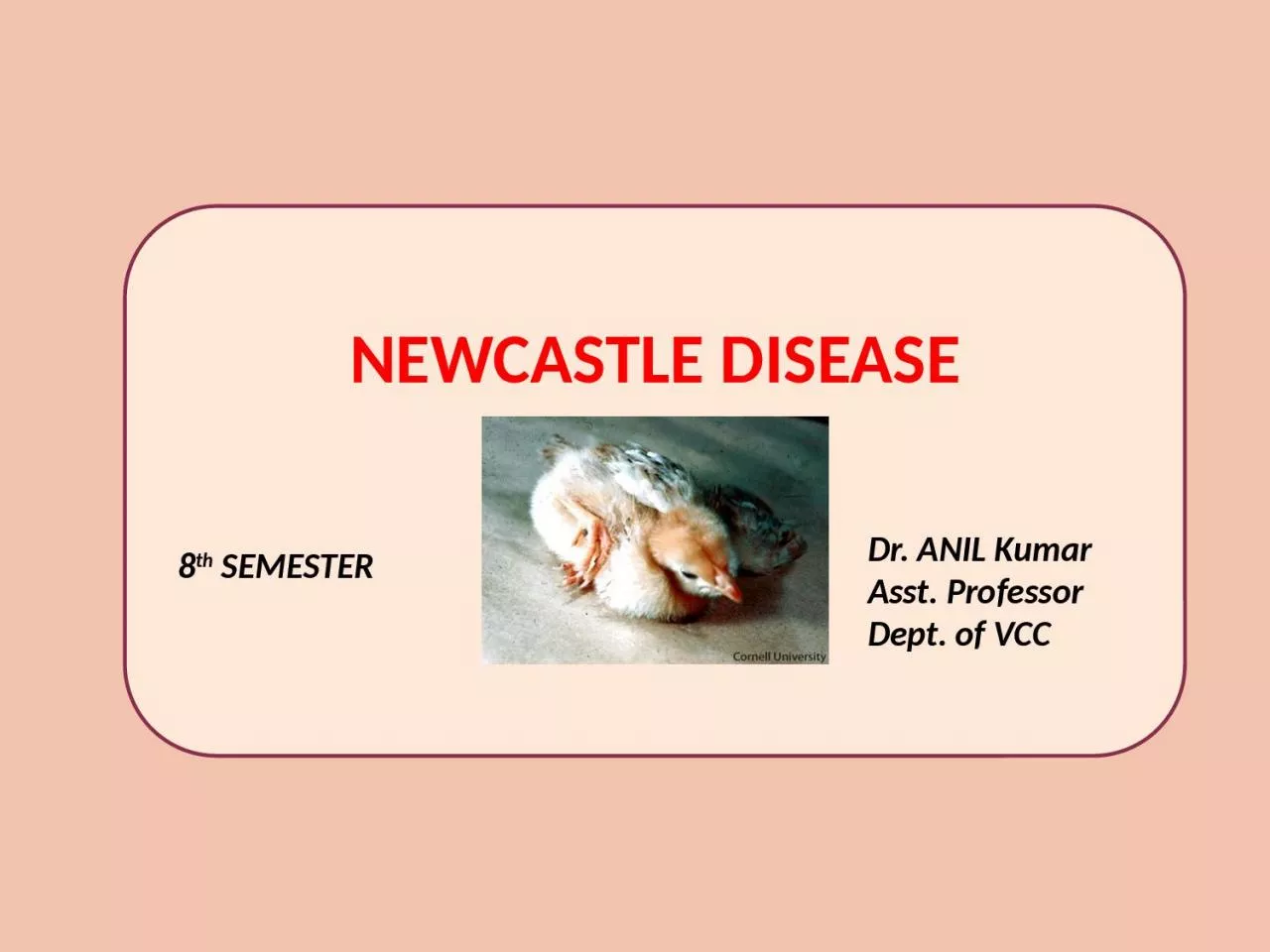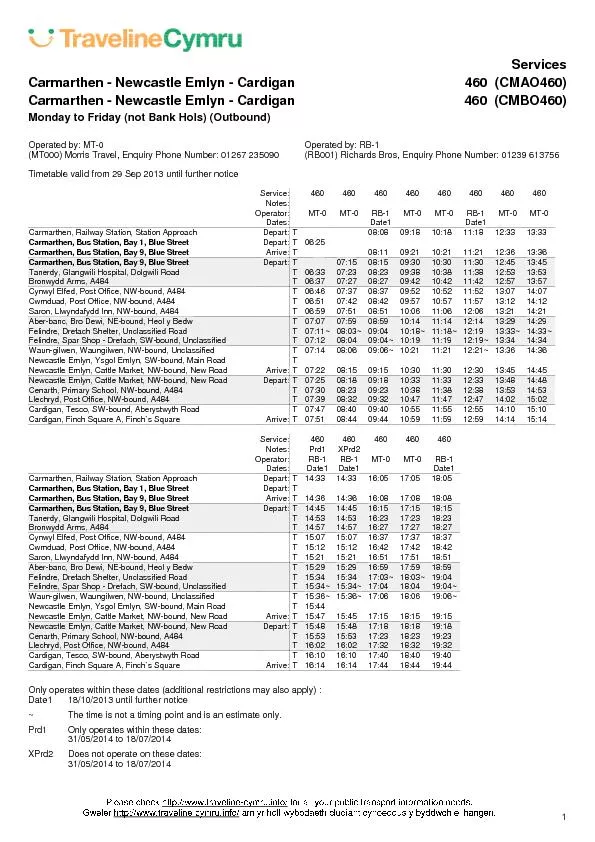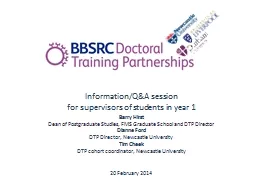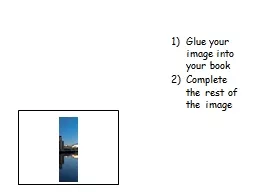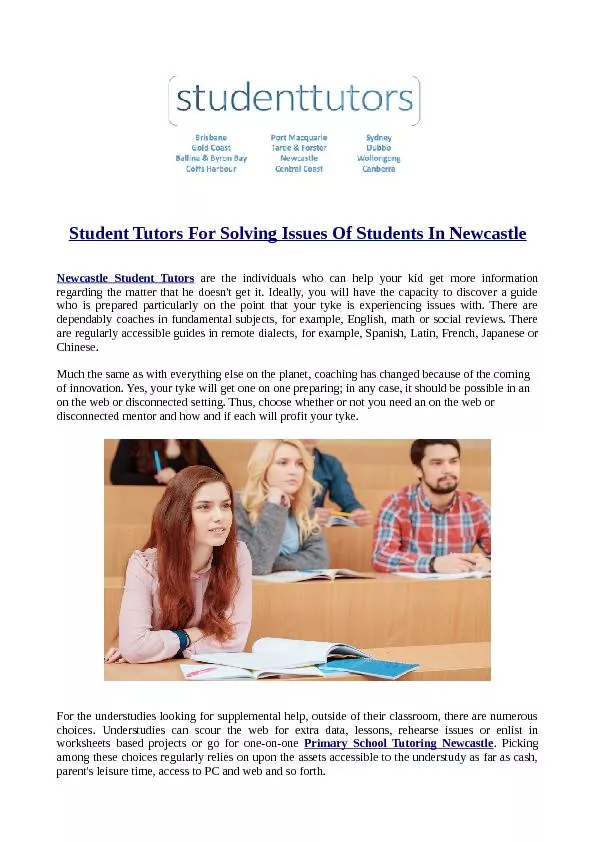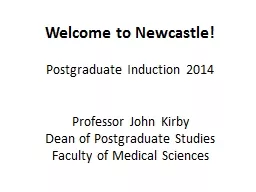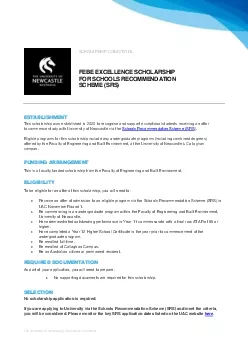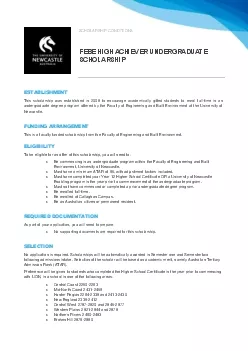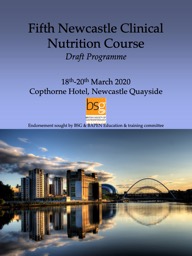PPT-NEWCASTLE DISEASE 8 th SEMESTER
Author : madeline | Published Date : 2024-03-13
Dr ANIL Kumar Asst Professor Dept of VCC NEWCASTLE DISEASE ETIOLOGY Paramyxo virus RNA Virus First time recorded in New castle in 1926 in England and in Ranikhet
Presentation Embed Code
Download Presentation
Download Presentation The PPT/PDF document "NEWCASTLE DISEASE 8 th SEMESTER" is the property of its rightful owner. Permission is granted to download and print the materials on this website for personal, non-commercial use only, and to display it on your personal computer provided you do not modify the materials and that you retain all copyright notices contained in the materials. By downloading content from our website, you accept the terms of this agreement.
NEWCASTLE DISEASE 8 th SEMESTER: Transcript
Download Rules Of Document
"NEWCASTLE DISEASE 8 th SEMESTER"The content belongs to its owner. You may download and print it for personal use, without modification, and keep all copyright notices. By downloading, you agree to these terms.
Related Documents

